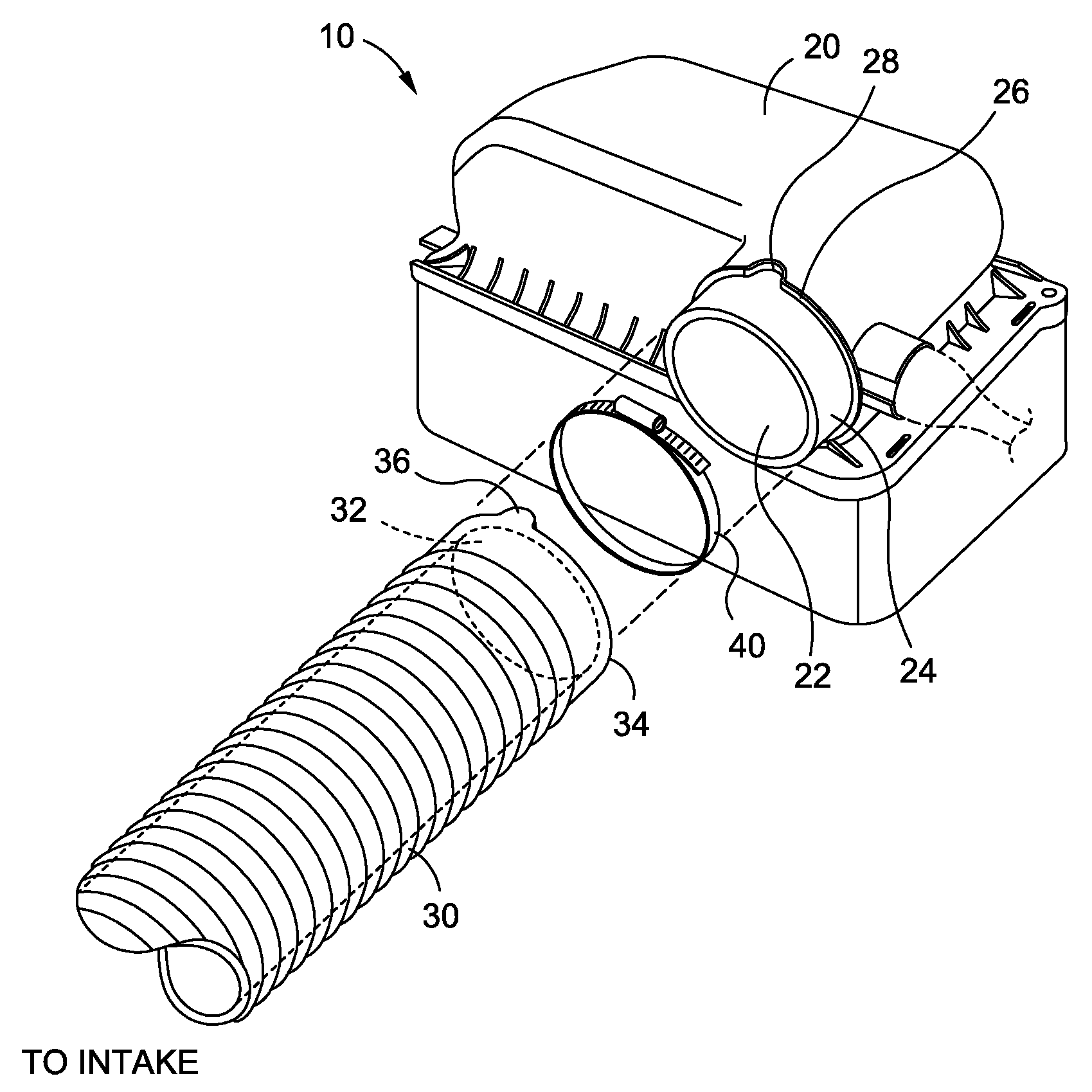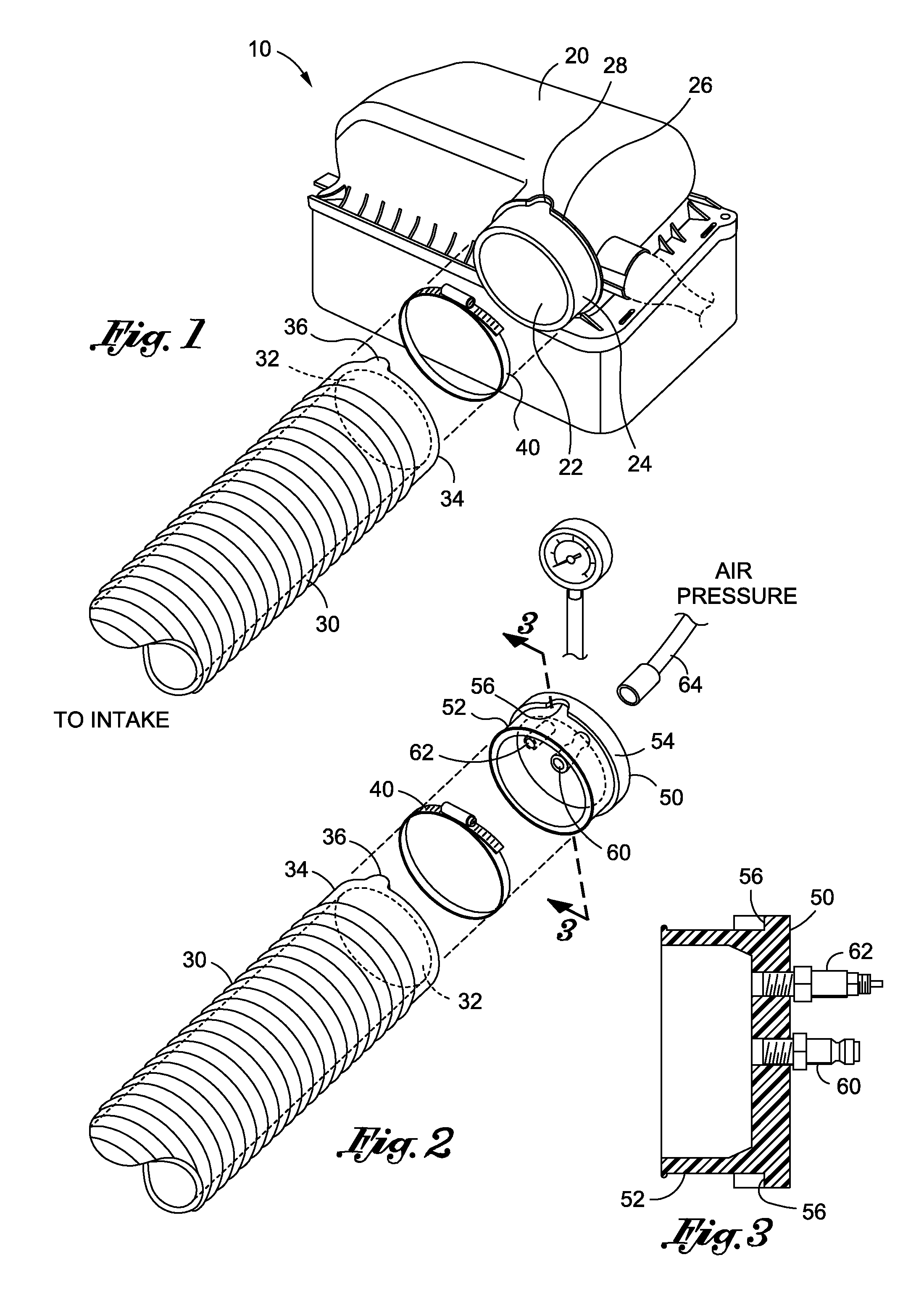Leak detection system with secure sealing mechanism
a leak detection and sealing mechanism technology, applied in the direction of measurement devices, instruments, structural/machine measurement, etc., can solve the problems of increased fuel consumption, increased drivability complications, and increased fuel consumption, and achieve the effect of increasing pressur
- Summary
- Abstract
- Description
- Claims
- Application Information
AI Technical Summary
Benefits of technology
Problems solved by technology
Method used
Image
Examples
Embodiment Construction
[0024]The detailed description set forth below is intended as a description of the presently preferred embodiment of the invention, and is not intended to represent the only form in which the present invention may be constructed or utilized. The description sets forth the functions and sequences of steps for constructing and operating the invention. It is to be understood, however, that the same or equivalent functions and sequences may be accomplished by different embodiments and that they are also intended to be encompassed within the scope of the invention.
[0025]Referring now to the Figures, and initially to FIG. 1, there is shown an air induction system 10 comprising the combination of air induction system housing 20 and air induction hose 30 designed to be coupled therewith. As is well-known and per conventional air induction design, the air induction system housing 20 and air induction hose 30 are operative to regulate and assist air flow as needed for use by the vehicle's int...
PUM
 Login to View More
Login to View More Abstract
Description
Claims
Application Information
 Login to View More
Login to View More - R&D
- Intellectual Property
- Life Sciences
- Materials
- Tech Scout
- Unparalleled Data Quality
- Higher Quality Content
- 60% Fewer Hallucinations
Browse by: Latest US Patents, China's latest patents, Technical Efficacy Thesaurus, Application Domain, Technology Topic, Popular Technical Reports.
© 2025 PatSnap. All rights reserved.Legal|Privacy policy|Modern Slavery Act Transparency Statement|Sitemap|About US| Contact US: help@patsnap.com


